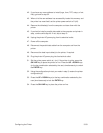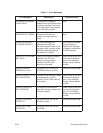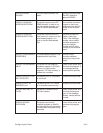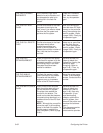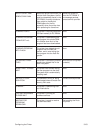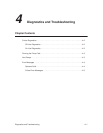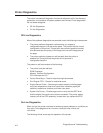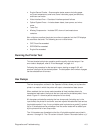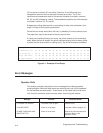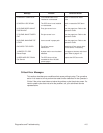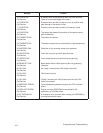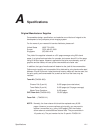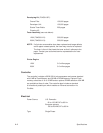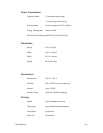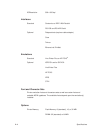
4–3Diagnostics and Troubleshooting
• Engine Sensor Checks – Scans engine status sensors including paper
out, fuser temperature, toner level, cover interlocks, paper jam switches,
and fuser cam motor
• Video Interface Error – Consists of interface protocol failures
• Optical System Errors – Includes beam detect, laser power, and mirror
motor
• Toner Out
• Missing Components – Includes OPC drum unit and waste toner
container
Non–critical errors allow the printer to continue to operate, but the LCD displays
the conditions that exist. The following are non–critical errors:
• OPC Drum life exceeded
• EEPROM life exceeded
• Engine life exceeded
Running the Printer Test
This test checks both printer operation and the quality of printed output. If an
error code is displayed, refer to “Error Messages” on page 4–4.
Following the procedure for the test print menu, starting on page 3–52, will
produce a test print of the desired pattern. The test pattern and number of pages
can be selected from this menu.
Hex Dumps
The hex dump option, outlined in the
Operator’s Guide
, allows you to place the
printer in a mode in which the printer will output a hexadecimal data stream.
When enabled, the hex dump mode translates all host interface data to its
hexadecimal equivalent, then prints the hex code and its printable symbol, if one
exists. Figure 4–1 shows a partial example of a hex dump.
All characters printed after entering the hex dump mode (including any in the
input buffer) are printed in two forms: as a two–symbol hexadecimal code and as
its printable symbol, if any. A non–printable code is printed as a period [.] symbol.
Up to 16 characters can be printed per line. No control codes will be acted upon
by the printer while in hex dump mode.
The 16 characters are formatted so that the 16 printable symbols are printed in
columns 1 through 16. The 17th column is blank. Column 18 contains either a “p”



